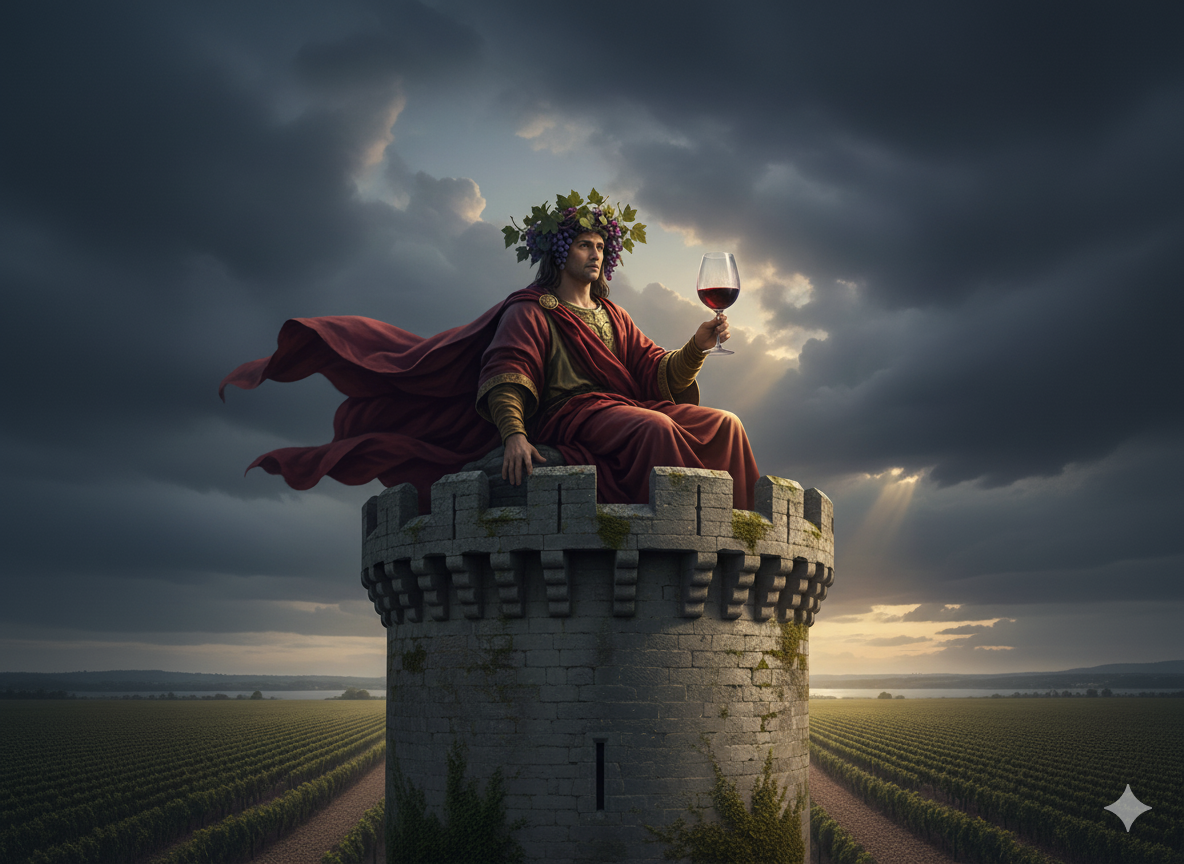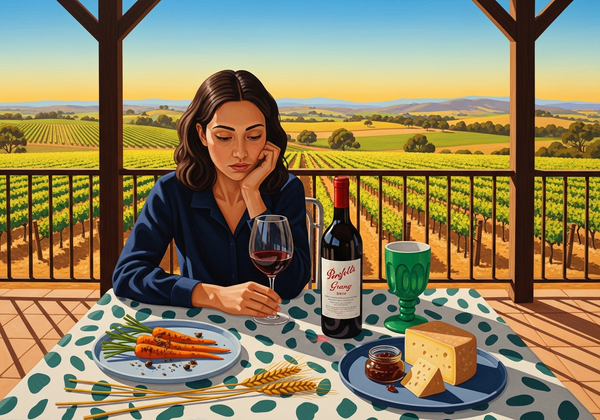Château Latour: The Fortress of Pauillac
Château Latour, a First Growth since 1855, is Bordeaux’s fortress. From its sacred Enclos vineyard in Pauillac, it produces Cabernet of unmatched power and longevity, releasing wines only when ready — a legacy of endurance and authority.

From medieval stronghold to First Growth titan, Latour has ruled Bordeaux not with charm, but with unyielding authority.
The Origins: A Tower Above the River
The story of Latour is older than Bordeaux’s modern classification. Its name derives from a tower built in the 14th century, overlooking the Gironde estuary. This was not yet a wine château, but a fortress — a stronghold in the Hundred Years’ War.
By the 17th century, vines had claimed these gravelly soils in Pauillac. And unlike many Bordeaux estates that relied on merchants, Latour’s wines gained renown directly among aristocrats and royals. Even then, they carried a reputation for power and longevity.
The 1855 Classification: A Crown Confirmed
When Napoleon III ordered Bordeaux’s wines ranked for the 1855 Exposition Universelle, Latour was crowned one of the five Premier Crus Classés — the First Growths.
Yet while Lafite seduced with elegance, Margaux with perfume, and Haut-Brion with history, Latour was recognized for something different: strength and durability. Its wines could live a century. They were not built to charm; they were built to endure.
The Vineyard: Stones of Power
Latour’s authority lies in its terroir:
- The Enclos: A 47-hectare walled vineyard at the heart of the estate, planted on deep gravel over clay subsoils. This is the source of Latour itself.
- Le Pauillac de Latour: Produced from younger vines outside the Enclos.
- Les Forts de Latour: Introduced in the 1960s, this “second wine” often rivals other classified growths.
The Enclos is sacred ground — vines here draw strength from stone and depth from clay, yielding Cabernets that can last lifetimes.
The Style: Authority in a Glass
Latour’s wines are unmistakable.
- Youth: Dense, powerful, dark — blackcurrant, graphite, cedar, iron.
- Maturity: Leather, tobacco, earth, game, truffle, always with a backbone of Pauillac steel.
- Longevity: The great vintages — 1961, 1982, 2000, 2010 — can outlive generations.
Latour is less about charm than command. It is the fortress in your cellar, unyielding, eternal.
The Modern Era: A Fortress Closed to the Market
In 1993, Latour was acquired by French billionaire François Pinault, whose Artemis Group also owns Château-Grillet, Clos de Tart, Eisele Vineyard, and Domaine d’Eugénie.
In 2012, Latour stunned the wine world: it announced it would no longer sell wines en primeur (futures). Instead, it would release vintages only when ready to drink. For a château with unrivaled patience, this was a declaration of power — Latour no longer bowed to Bordeaux’s market games.
Liber’s Take: The Fortress Beyond Time
What I admire in Latour is its clarity of identity. It does not bend to fashion. It does not need to seduce. It endures.
Other estates may chase trends, release rosés, expand portfolios. Latour sits within its walls and produces Cabernet Sauvignon of such authority that collectors wait decades for its judgment.
Like me, Latour believes in freedom — but not freedom of excess. Freedom of endurance. Its greatness lies not in its noise, but in its permanence.
To drink Latour is to taste time itself, encased in stone and gravel, released only when the fortress deems you ready.
Conclusion: Why Latour Matters
Among Bordeaux’s First Growths, Latour is the anchor, the immovable. It is the fortress of Pauillac, the wine that refuses compromise, the estate that turned patience into its ultimate weapon.
Château Latour: Bordeaux’s fortress, bottling authority that endures beyond lifetimes.





